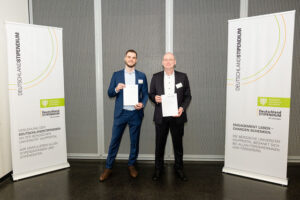In Germany alone, hospitals treat over 50,000 patients every day. Given the ever-increasing need for fast and reliable healthcare, hospitals are demanding modern network solutions. Information technology and its supporting infrastructure are becoming critical components in the industry.
To review test results or prescribe medication, medical professionals need real-time access to all relevant patient data. Furthermore, medical devices such as computed tomography (CT) or magnetic resonance imaging (MRI) scanners must be able to deliver data-intensive scans directly to the specialist departments. Unlike many other power grids, there is therefore no room for downtime in hospitals. Any power interruption can immediately become a danger to the lives of patients.
It is certainly no surprise these days that a hospital cannot function without electricity. However, the electricity itself can also become a problem. Fluctuations in the power grid can lead to faulty entries or data loss when collecting and storing health data. This effect is amplified when the number of electronic devices in the local power grid increases. The electrical environment becomes “louder” and more “distorted”.
In practice, these problems are evident in X-ray machines, which are usually susceptible to voltage spikes and harmonic distortions. As a rule, this leads to a shortened service life of the components, as well as data loss during operation.
Changes in the power grid also pose a risk to the physical safety of patients and medical staff themselves. The risk of fires and electric shocks increases if live parts of the housing come into direct or indirect contact with people. Similarly, critical systems such as life-support machines in intensive care units require a constant power supply so that they can perform their task effectively and without fatal consequences.
All these risks can be reduced by using isolators, which protect the devices from the effects of voltage spikes. This is achieved by interrupting the electrically conductive connections between the network periphery and the device. REO offers the REOMED series specifically for these purposes.
REO network isolators also enable virtually loss-free transmission of high-frequency AC signals, in accordance with the medical requirements of IEC 60601-1. This standard stipulates that devices and systems that are connected by means of signal interfaces must have electrical isolation devices in the power and data lines.
REO components are currently found in many intensive care applications around the world. With experience and broad knowledge in component construction, REO contributes to ensuring that around 50,000 patients can be treated safely, well and quickly every day.




